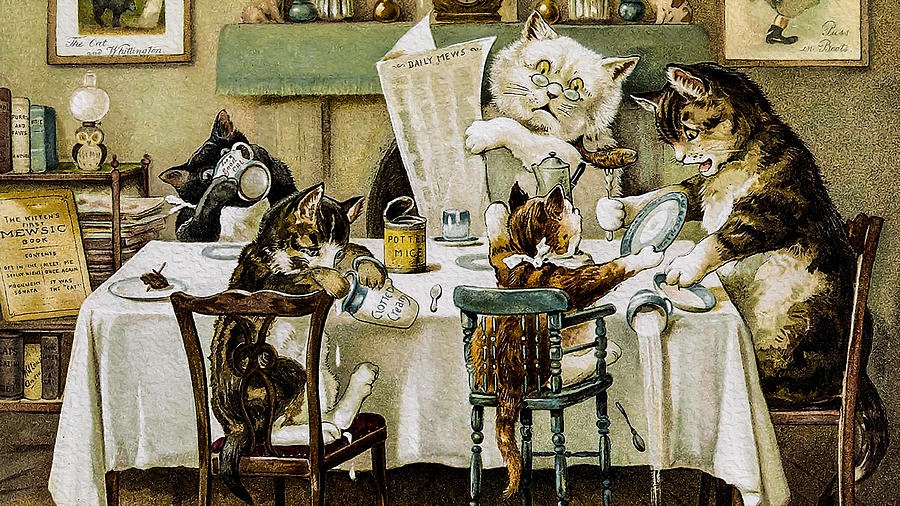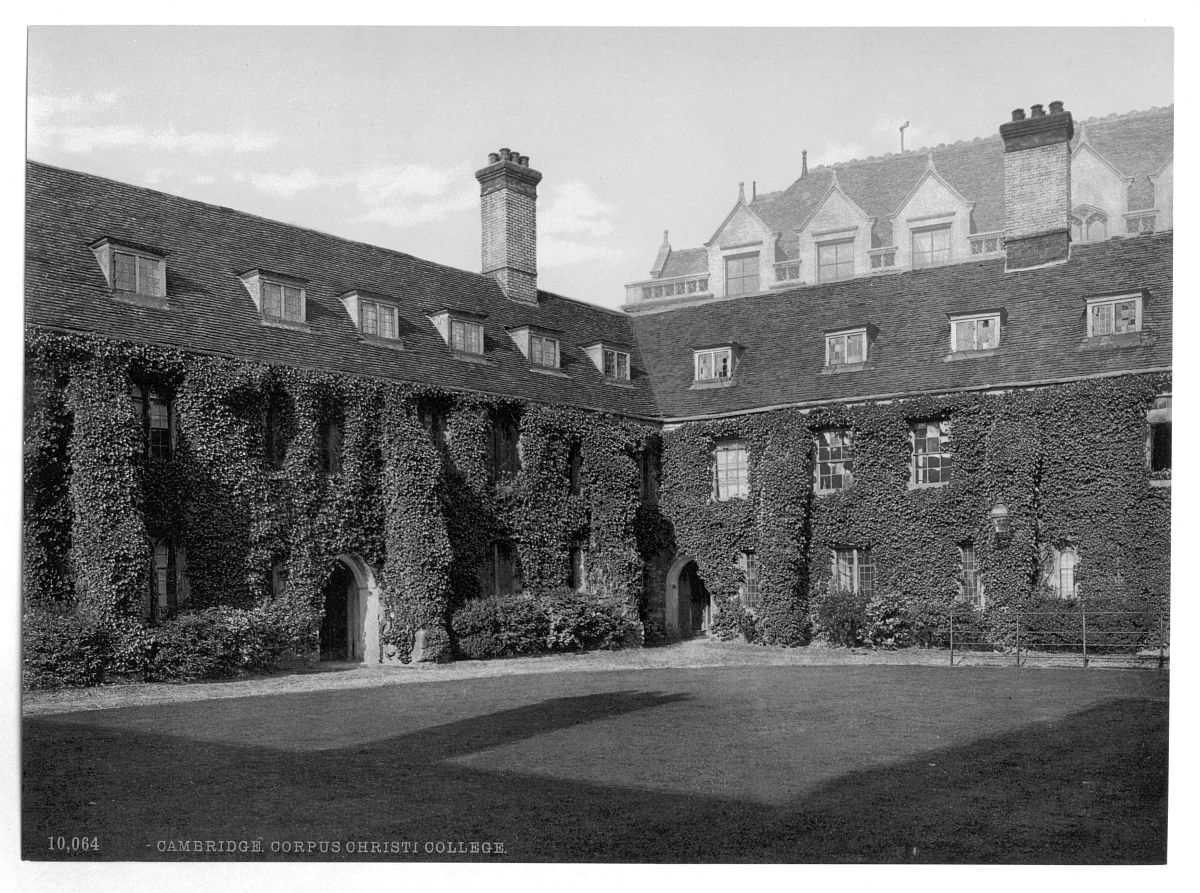An old and venerable British academic institution would make an ideal backdrop for a M.R. James-style haunting, and, happily for us, a little over a hundred years ago, Cambridge University was obliging enough to provide us with a corker. On December 5, 1926, the “Sunday Express” published Lieut. Colonel Cyril Foley’s reminiscences of his encounter with a classic Edwardian ghost. (Note: There are other accounts of this particular ghost story, but Foley’s is generally regarded as the most authoritative.)
Just about twenty-two years ago, in October, 1904, Cambridge University rocked with excitement over some psychic phenomena of exceptional interest.
The Cambridge authorities deemed it advisable at the time to suppress the publication of the facts, for obvious reasons, and no full and accurate account emanating from any of the principals in the drama has ever been published.
Of course I had, like most people at the time, heard vaguely of the occurrence, but few people knew what actually happened, and it is thanks to Mr. Shane Leslie, the author, who was one of the participants in the gruesome event, that I am able to record for the first time an accurate account of what happened.
The scene was laid in Corpus Christi College.
About the middle of the eighteenth century it is believed that a certain Doctor Bott, a Fellow of the college, committed suicide in his rooms there, just before he was due to preach the University sermon, and these rooms have been haunted ever since.
Originally they formed part of Archbishop Parker's suite and always had a bad record. Their last occupant, a tutor of the college, is said to have crawled out of them on his hands and knees about a generation ago and the rooms were officially closed. They were opened again in the winter term of 1904.
There was at that time a Cambridge Psychical Research Society, and it happened on this particular evening of October, 1904, that three members of that society were gathered in the room of a Kingsman. I shall refer to him in the story as the Kingsman, but I am permitted to say that he was a young man of temperate habits, a very distinguished King's scholar, and about to take up Holy Orders. The other two were Mr. Shane Leslie and Mr. Wade, also an Ordinand.
They had been discussing, among other things, these very rooms when, at about ten minutes to ten an excited undergraduate from Corpus burst in upon them and implored them to go to the assistance of the occupier of the rooms who was, he said, in great distress.
He told them that the poor man was reduced to such a state of nerves that he could do no work. A face had been seen at his window from the Old Court, after the door had been "sported" and the room left empty.
Footsteps were heard in one room while the occupant slept in the other. It was a case requiring definite action. Something more than an appeal to the tutor or a consultation with the college porter.
The Kingsman leapt to his feet.
"This is an Evil Spirit which must be exorcised," he said, "and I am going to take it by the throat. Will you two stand by me?"
They agreed to do so. He then opened a cupboard disclosing a temporary altar, from the tabernacle of which he drew a phial of holy water, and the four then set off for Corpus.
As they passed through the Great Court of King's the college clock struck ten, and it was only by doing "level time" that they got down the King's Parade and through the Gate of Corpus on the last stroke of the hour.
Their guide directed them to the ill-omened and ivy-clad rooms in a corner of the Old Court, where they were met by the pale occupant, who told them that it was impossible to stay in the rooms under prevailing conditions.
The Kingsman said, "In these cases we can only use exorcism, which Christ bequeathed to His Holy Church."
They entered the room, and the Corpus man, a young Ordinand of singular piety, produced a large Crucifix from the folds of his gown. This the Kingsman took and without preamble raised it above his head, and began to chant the terrible words of the Exorcism Service in which the fiend is personally addressed and defied.
The Corpus man had shut the door, and there was no light in the room except that given by a tiny twinkling fire.
At the termination of the Exorcism the four men remained silent. Nothing occurred, and Leslie was about to speak when the Kingsman suddenly cried, "The Thing is here!"
With nerves on edge they peered into the gloom.
"The Thing is watching me," he said. "Push me slowly forward, hold up my arms, but do not get in front of the Crucifix as you value your lives."
His companions upheld his elbows, as Aaron and Hur once supported the aching Moses.
Leslie, who had hold of one of his arms, felt it suddenly stiffen, and at the same moment the Kingsman cried out, "The Thing is pulling me, hold me tight or I shall lose the Crucifix."
Like some powerful magnet, the Evil Thing was actually drawing him out of the grasp of his companion. It was a veritable "pull devil, pull baker" situation.
It was also a terrifying one. The atmosphere of the room had become surcharged with an intangible yet all-absorbing Evil, which sapped the strength and numbed the senses. It had become a definite tussle, a combination of a tug-of-war and a Rugby scrum.
All the human competitors were bathed in a cold perspiration of fear and effort. The affair became intolerable. Fortunately the Kingsman kept his head. There was only one thing to be done. "Push me right into the Foul Fiend," he said, and crying out "Limb of Satan, avaunt in the name of the All Holy," the whole party crashed into the ancient panelling of the room. In a state more easily imagined than described, they picked themselves up, gathered round the fire, and poked it into being.
"The Thing is gone," said the Kingsman. None of the other three dared speak.
He then took the flask of holy water from his pocket and began to sprinkle the room. Some drops fell into the fireplace with a demoniacal hiss, and the Kingsman, swinging round, pointed to the open doorway of the bedroom, and said: "The Thing is in there."
Without hesitation or assistance, and minus the crucifix, he sprang through the doorway of the bedroom. It was a courageous but unsuccessful manœuvre, for with the speed of thought he was hurled back through the doorway, and fell in a heap at their feet.
The situation was as follows: The Kingsman was crawling about on the floor, searching for the half empty flask of holy water which he had dropped in his fall. Wade was in a corner of the room holding the crucifix over the cowering Corpus man, while Leslie, on his knees near the fire, devoid of initiative, and having, as he admits, given up all hope, was praying pitifully.
They were a beaten side beaten by an innings and a hundred runs--by ten goals to nothing--devoid of cohesion and volition, prisoners of war, captured by Satan, vanquished and manacled by the powers of evil, and doomed to death.
They could only stare vacantly into the blackness of the bedroom, out of which the evil Thing was slowly advancing. Their tongues clove to the roof of their mouths. They could not cry for help.
And then, framed in the square-cut darkness of the doorway, the Thing appeared.
It bore a human shape, and was menacing, but beyond that, no one could afterwards visualize its exact aspect. But upon one point they were all agreed. It was cut off at the knees!
Crash! Crash! Crash!-something was happening outside their mentality. Crash! again, and the door was burst open and floods of light and excited undergraduates poured into the room. Their listening impatience had mastered their fear of the occult.
The situation was temporarily saved. It is easy to imagine the remarks of the uninstructed rescue party. "Where is the ghost? Does it bite?" etc., etc., but it was significant how quickly their attitude changed from gay to grave, a change not altogether due to the obvious distress of the principal actors, but rather to the inexplicable and uncanny atmosphere of the room itself.
"The Thing has ascended into the room above, and we must follow it," said the plucky Kingsman.
The four principals, leading a mass of supporters, started up a tiny flight of stairs, and entered the room of a medical student who was reading, unconscious of the terrors of the room below.
Now it so happened that he was a pronounced atheist and had been ragged in consequence some little time before. He naturally thought that this invasion was a repetition, and being of a stubborn disposition got off his anti-spiritual views first.
"This is just the room where the Thing is sure to have gone," said the Kingsman, and the undergraduates, crowding the doorway, grinned approval, while the occupant of the room proclaimed the nullity of the spirit world.
The Kingsman advanced with uplifted crucifix towards the corner of the room, and the medical student darted daringly in front of him.
The Kingsman warned him not to do so, but he persisted, and to the horror of every one fell in a heap on the floor, murmuring, " I am cold, I am cold, I am icy cold."
For the first time the unconvinced spectators were awed, for here was proof indeed-the scoffer, turned into a humble and dejected heap of clothes, huddled up in a corner and complaining that he was "icy cold."
The Kingsman, protecting him with the crucifix, soothed him back to sanity. Every spectator was struck dumb with fear and amazement. Nothing further of psychical interest occurred beyond the rather natural collapse of all three, who were conducted back to their rooms. The only wonder was that the Kingsman had borne the strain so long and so courageously.
By this time the undergraduates were thoroughly roused, and pouring down the stairs, rushed into the haunted rooms below, and completely demolished them.
Led by some brawny oarsmen, they broke up all the cupboards and tore down the ancient oak panelling.
There was the devil of a row the next morning. The Corpus authorities forbade any Kingsmen to enter their college an order which, had I been a Kingsman, I should most certainly have obeyed-and did their best to hush up the whole affair, in which latter objective they were joined by the University authorities.
The principals agreed among themselves never to divulge what they had seen and experienced while they remained undergraduates, and the whole affair died a natural death.
The rooms, or what remained of them, were closed. But, all said and done, though it goes much against the grain, as an old Cantab, to do it, I personally give the devil that fight, on points.











